The 140mm Slim Tower CPU Cooler Roundup: Thin & Light Done Just Right
by E. Fylladitakis on May 24, 2017 8:00 AM EST- Posted in
- Cases/Cooling/PSUs
- be quiet!
- Noctua
- Phanteks
- Cooler
- Thermalright
Be Quiet! Shadow Rock Slim
Be Quiet supplies their tower cooler in a black, sturdy cardboard box, with minimal artwork but plenty of information about the cooler printed on all sides of the box. The company straightforwardly advertises that this cooler is capable of handling CPUs with thermal design power (TDP) up to 160 Watts, but this figure alone does not tell much about the overall performance of a cooler.
Inside the box we found a frugal bundle, consisting of a one-fits-all backplate, mounting hardware, a syringe with thermal compound, and a leaflet with very basic installation instructions.
The Shadow Rock Slim initially appears to be a very simple tower cooler that has been designed for 140 mm cooling fans. A closer inspection however reveals a very complex fin cutout that has been developed so as to minimize aerodynamic drag and, in extend, the noise that is being created by the moving airflow. A thicker, decorative metallic plate with the company logo etched on it can be seen at the top of the fin array. Rounded metallic caps cover the heatpipe end points.
Despite its “slim” identification, the Shadow Rock Slim is not really a slim CPU cooler. It certainly is much smaller than the monstrous Dark Rock Pro 3 that we reviewed a couple of years back, but still the body of the cooler alone is 52 mm wide. It comes with one of the company’s better fans, a special 135 mm variation of their “SilentWings” series. These fans feature a rifle bearing engine, which greatly improves the lifetime of the fan relative to the typical sleeve bearings, all the while retaining similar low-noise operation characteristics.
The Shadow Rock Slim is designed with only four heatpipes and a slightly smaller base than that of the other coolers in this review. Its design is sound, with the two middle heatpipes that will be facing the bulk of the thermal energy flow expanding into the edges of the fin array, where the airflow is going to be greater. This is the only cooler of this review that does not have nickel-plated heatpipes, so we can expect that their vibrant polish will soon disappear due to oxidation. (Oxidation doesn't cause any real damage, but it does eventually affect the cooler’s aesthetics)
The lower half of the cooler’s base is also made out of copper but, unlike the heatpipes, it is nickel plated. It has also been polished down to an immaculate mirror finish. The top half of the base is solid aluminum and does look like a small heatsink, yet its contribution to the overall performance of the cooler will be negligible, it is only meant to provide mechanical cohesion and support for the mounting hardware.


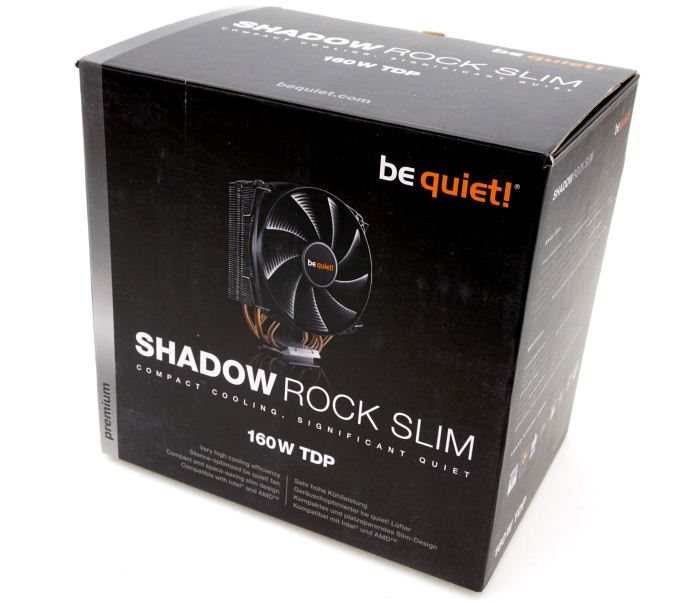
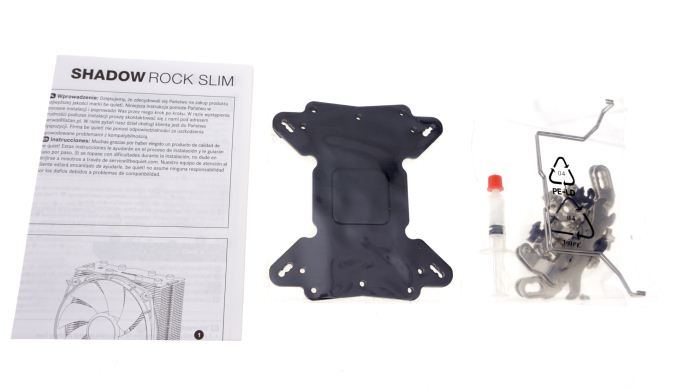

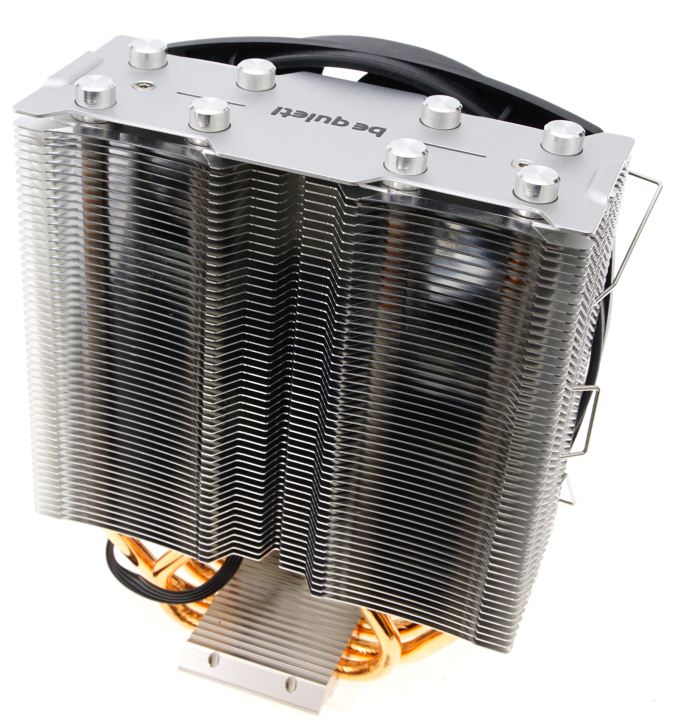
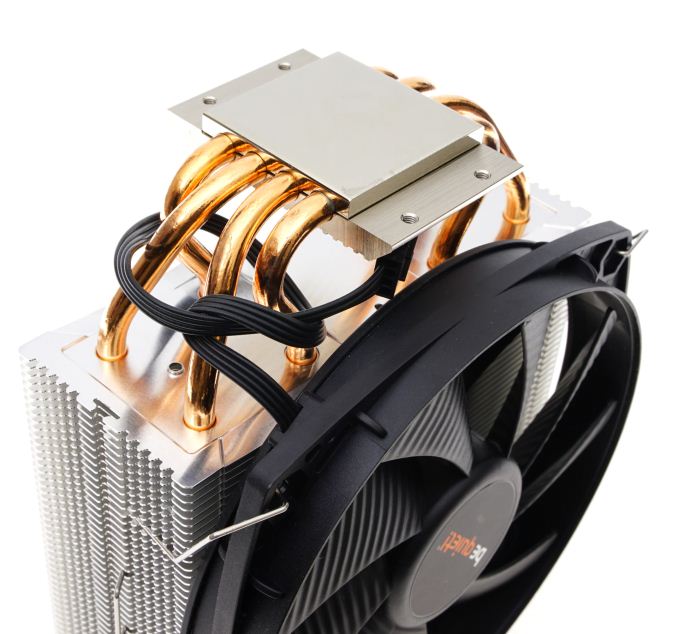
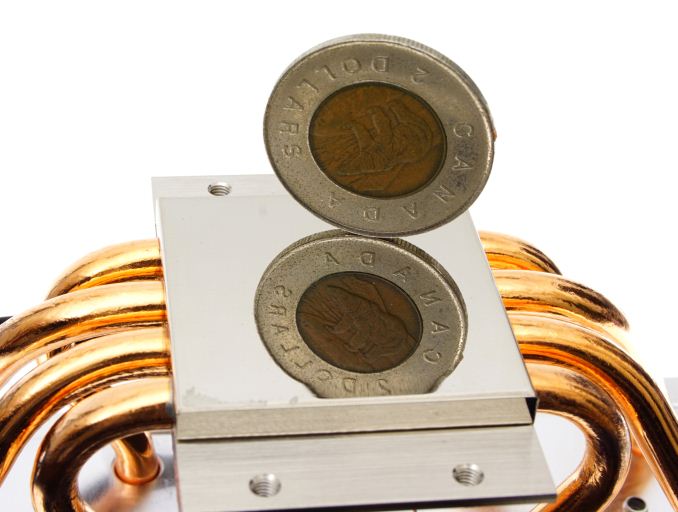








74 Comments
View All Comments
guidryp - Wednesday, May 24, 2017 - link
IMO, it looks like the Thermalright is the the winner. It's the least expensive, and up to 150 watts, it keeps the lowest temperature. How many CPUs pull over 150 watts? Especially in real world workloads, not torture testing??JoeyJoJo123 - Wednesday, May 24, 2017 - link
That would seem to be the case here, yes. Performs as well as the Noctua (better than the Noctua at low loads and nearly equal at high loads), while being physically smaller, and cheaper, too.The black and silver finish is relatively attractive, too, but appearances are subjective anyways.
A5 - Wednesday, May 24, 2017 - link
Agreed, and I own the Noctua.I've had Thermalright products in the past and they were excellent as well.
ShieTar - Wednesday, May 24, 2017 - link
That only remains true if the CPU produces power over the same area as the thermal cartridge used in the test. The problem, specifically with Intels latest 4-Cores, is that they generate 100W on a much smaller area. Then the overall cooling capability and the vertical thermal resistance of the cooler become less relevant, and the lateral thermal resistance of the cooler base-plate becomes increasingly critical. That is why an i7-7700K will run much hotter than older CPUs with the same TDP, but much more die area.JoeyJoJo123 - Wednesday, May 24, 2017 - link
You're not wrong, but there's more to that story.It's also partially attributable to Intel's usage of poor TIM between the die and the integrated heatspreader, rather than their older usage of fluxless solder.
Intel's newer chips (due to smaller die sizes and poorer thermal interface for the integrated heatspreader) means that by the time the heat meets the heatsink vs integrated heatspreader contact area, it's not being dissipated as efficiently as older CPU models.
guidryp - Wednesday, May 24, 2017 - link
I think you have the situation backwards. The way the Thermalright excels at lower temperatures and it's direct heatpipe design indicate it has superb transfer from the socket.It only falls behind later when when the smaller heatsink array can't dissipate it as quickly.
Eri Hyva - Wednesday, May 24, 2017 - link
Please, add a test with 9 volts.Arbie - Wednesday, May 24, 2017 - link
Other sites reviewing coolers (eg X-Bit Labs R.I.P.) have found ways to plot cooling ability vs noise level. That makes it much easier to evaluate and choose the best one. IIRC one site even got cost into the same picture. In any case, leaving the reader to separately juggle delta-T and dBA is weak.Galcobar - Thursday, May 25, 2017 - link
Gold standard for standardized testing the efficiency of noise to cooling is Silent PC Review.Unfortunately, the site suffered a serious lack of ad revenue and seemed to go into the media death spiral of lack of readership>lack of revenue>lack of content>lack of readership. Hasn't been a posting since August.
snarfbot - Wednesday, May 24, 2017 - link
Well the article measures perf as shipped which while good is not apples to apples as they all use diff fans. They should be measured separately with the same fan installed into each to take fan speed, voltage and noise out of the equation.